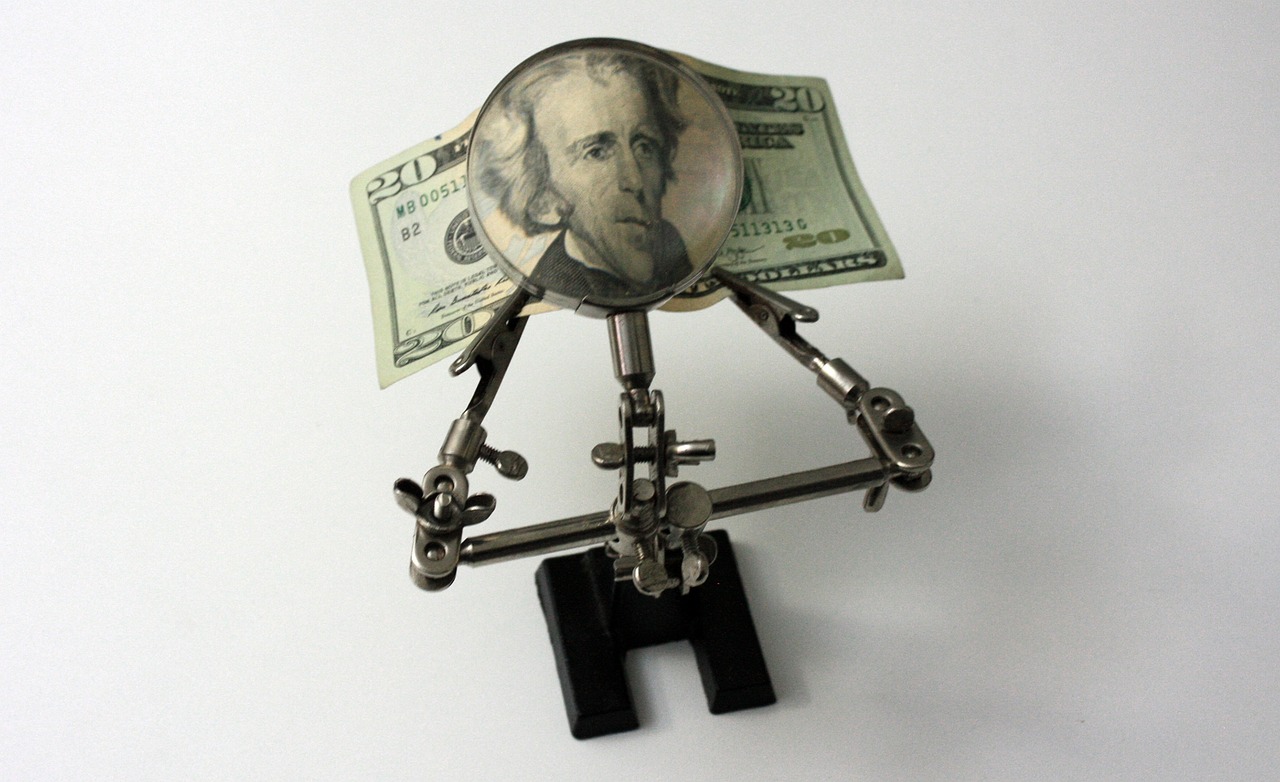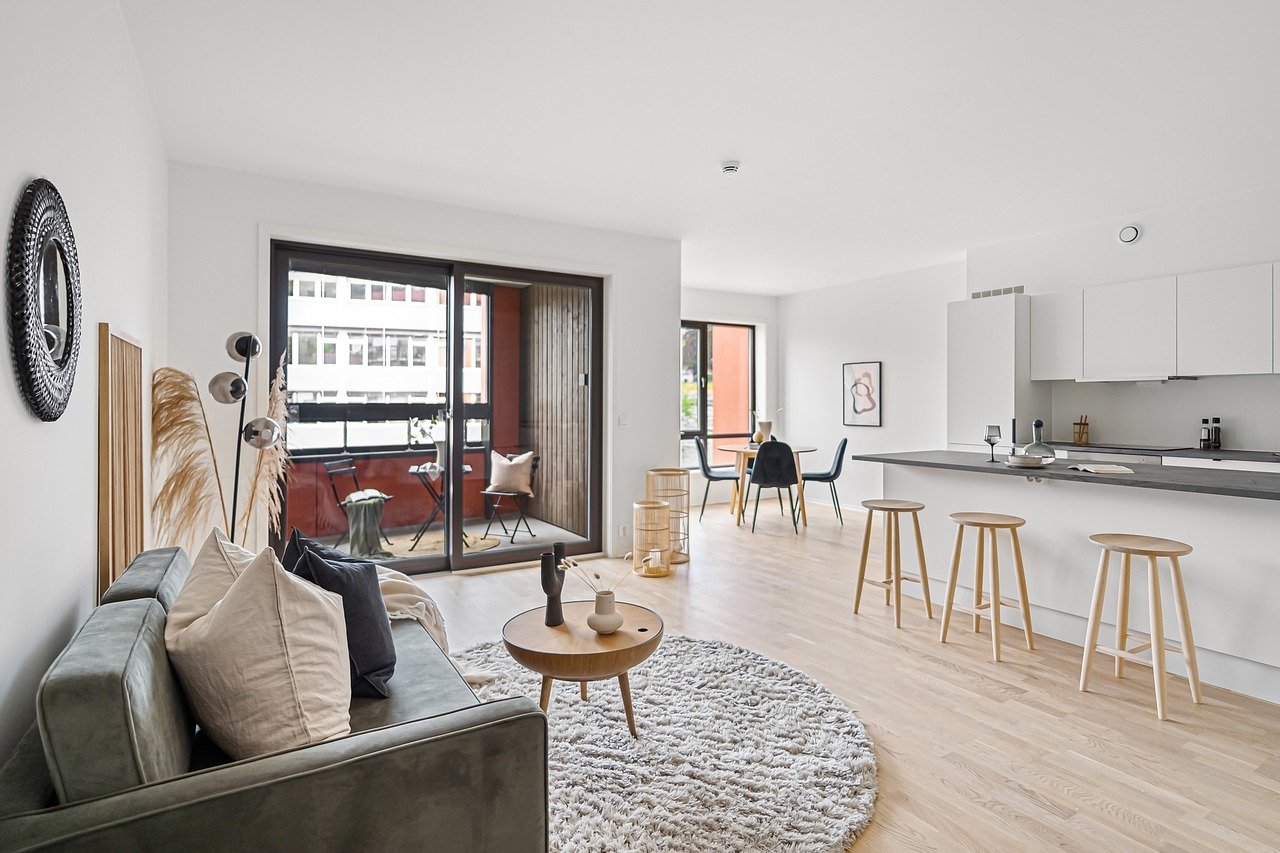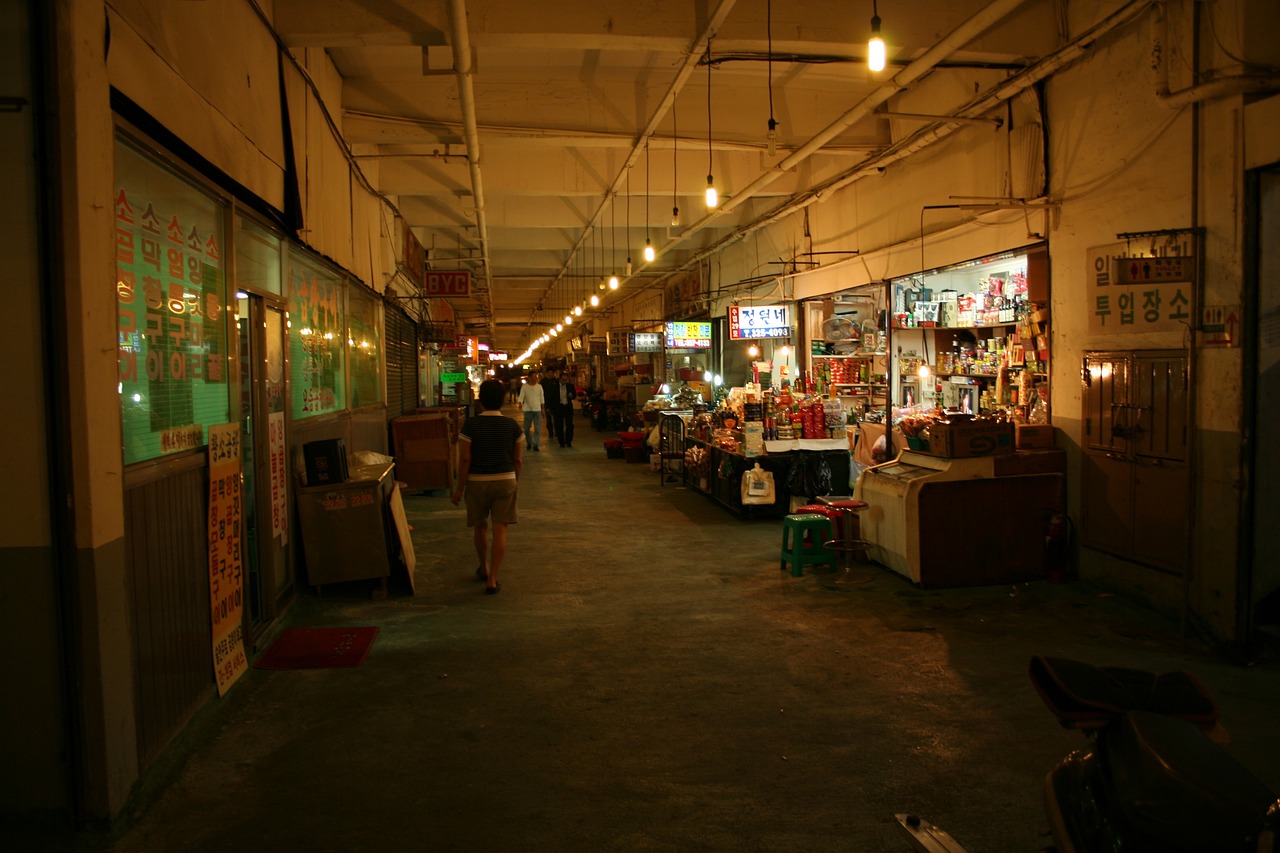How to Create a Circular Economy in Your Home?
Creating a circular economy in your home isn't just a trendy buzzword; it's a lifestyle choice that can lead to a **more sustainable and fulfilling way of living**. Imagine a world where waste is minimized, resources are reused, and everything has a purpose. Sounds dreamy, right? Well, it’s not just a fantasy! By adopting circular economy principles, you can transform your household into a hub of sustainability. So, how do you get started? Let’s dive into some practical steps that you can implement today to reduce waste, save money, and contribute to a healthier planet.
A circular economy is all about **minimizing waste and making the most of resources**. Unlike the traditional linear economy—where we take, make, and dispose—this model emphasizes keeping products and materials in use for as long as possible. Think of it as a cycle where everything is interconnected, and nothing goes to waste. This approach is significant not only for fostering sustainable living practices but also for ensuring that future generations can enjoy the same resources we do today. By understanding this concept, you can start to see your household as part of a larger ecosystem that thrives on sustainability.
Implementing a circular economy in your home comes with a plethora of benefits. From **cost savings** to **environmental protection**, the advantages are compelling. Let’s unpack some of these benefits:
Who doesn’t love saving money? Adopting circular practices can lead to significant cost reductions. By promoting resource sharing, reuse, and recycling, you can stretch your budget further than you might think. For instance, instead of buying new items, consider:
- **Repairing** broken items instead of tossing them out.
- **Buying second-hand** goods from thrift stores or online marketplaces.
- **Hosting swap parties** with friends to exchange clothes, books, and household items.
These practices not only save you money but also reduce the demand for new products, which is a win for both your wallet and the environment.
Engaging in DIY projects is a fantastic way to unleash your creativity while reducing waste. Instead of discarding old furniture or clothes, why not transform them into something new? For example, you could:
- Turn an old ladder into a stylish bookshelf.
- Transform glass jars into beautiful candle holders.
- Repurpose t-shirts into reusable shopping bags.
Not only do these projects encourage resourcefulness, but they also give your home a unique touch that reflects your personality.
Participating in the **sharing economy** allows you to access goods and services without the burden of ownership. Platforms like **NeighborGoods** or **BlaBlaCar** enable you to share tools, cars, or even skills with your neighbors. Imagine borrowing a power drill instead of buying one you’ll use once! This approach not only saves money but also fosters a sense of community and connection among neighbors.
Transitioning to a circular economy has a **positive impact on the environment**. By reducing landfill waste and conserving natural resources, you’re actively contributing to a healthier planet. Consider this: when you recycle or compost, you are diverting waste from landfills, which helps to reduce greenhouse gas emissions. Furthermore, by choosing to buy less and reuse more, you’re decreasing the demand for new resources, which in turn helps to protect our forests, oceans, and wildlife.
Now that you understand the benefits, let’s explore some practical steps for integrating circular economy principles into your daily life. It all starts with **mindful consumption**.
Being conscious of what you buy is crucial for a circular economy. Before making a purchase, ask yourself: “Do I really need this?” or “How long will I use this item?” Making informed decisions can significantly reduce unnecessary waste. Here are some tips to help you:
- **Research the brand**: Look for companies that prioritize sustainability.
- **Choose quality over quantity**: Invest in durable products that last longer.
- **Support local businesses**: This reduces transportation emissions and supports your community.
Proper waste management is essential for minimizing your environmental impact. Implementing strategies for sorting, recycling, and composting can help you manage household waste effectively. Here’s how:
- **Set up a recycling station**: Clearly label bins for paper, plastics, and metals.
- **Start composting**: Composting food scraps reduces landfill waste and creates nutrient-rich soil for your garden.
- **Educate your family**: Make sure everyone understands the importance of reducing waste and how to recycle correctly.
By taking these steps, you’re not just cleaning your home; you’re actively participating in a movement towards sustainability.
Q: What is a circular economy?
A: A circular economy is a system aimed at minimizing waste and making the most of resources by reusing, recycling, and sharing products rather than disposing of them.
Q: How can I start implementing circular economy practices at home?
A: You can start by being mindful of your purchases, engaging in DIY projects, participating in the sharing economy, and managing your waste effectively through recycling and composting.
Q: What are some DIY projects I can do to contribute to a circular economy?
A: You can transform old furniture, repurpose glass jars, or create reusable shopping bags from old t-shirts.
Q: How does a circular economy benefit the environment?
A: A circular economy reduces landfill waste, conserves natural resources, and decreases greenhouse gas emissions, contributing to a healthier planet.

Understanding Circular Economy
The concept of a circular economy is all about rethinking how we produce, consume, and dispose of products. Instead of the traditional linear model—where we take resources, make products, use them, and then throw them away—a circular economy aims to create a closed-loop system. This means that materials and resources are kept in use for as long as possible, thereby reducing waste and minimizing the consumption of finite resources. Imagine a world where nothing goes to waste; that’s the essence of a circular economy.
At its core, the circular economy promotes sustainability by encouraging practices that extend the life cycle of products. This is achieved through various strategies such as repairing, reusing, and recycling. For instance, instead of tossing out an old piece of furniture, you might consider refurbishing it or donating it to someone who can use it. This not only conserves resources but also fosters a sense of community and responsibility. By shifting our mindset from ownership to stewardship, we can significantly lessen our environmental footprint.
Moreover, the importance of a circular economy extends beyond individual households; it has profound implications for our communities and the planet as a whole. When households adopt circular practices, they contribute to a larger movement towards sustainability. This collective effort can lead to reduced pollution, less strain on landfills, and a more resilient ecosystem. In essence, adopting a circular economy is not just a personal choice; it’s a commitment to a healthier planet.
To further illustrate this concept, consider the following table that outlines the key differences between a linear economy and a circular economy:
| Linear Economy | Circular Economy |
|---|---|
| Take, Make, Dispose | Reduce, Reuse, Recycle |
| Resources are consumed and discarded | Resources are kept in use |
| Creates waste and pollution | Aims to minimize waste |
| Short-term product lifespan | Long-term product lifespan |
In conclusion, understanding the principles of a circular economy is the first step toward implementing sustainable practices in your home. By embracing this concept, you’re not just making a change for yourself but also contributing to a broader movement that seeks to protect our planet for future generations. So, as you ponder your next purchase or project, ask yourself: how can I make this part of a circular economy?

Benefits of a Circular Economy
Implementing a circular economy in your home is not just a trend; it's a transformative approach that brings about a multitude of benefits. By embracing this model, you can significantly enhance your lifestyle while contributing to a healthier planet. Imagine living in a space where waste is minimized, resources are utilized efficiently, and sustainability is at the forefront of your daily activities. Sounds appealing, right? Let’s dive into some of the key advantages that come with adopting circular economy principles in your household.
First and foremost, one of the most compelling benefits is cost savings. Who doesn’t want to save a few bucks? By focusing on resource sharing, reuse, and recycling, you can drastically cut down on your expenses. For instance, rather than purchasing brand new items, consider borrowing or sharing with neighbors. This not only reduces the need for new purchases but also fosters a sense of community. In fact, studies show that households that actively participate in a circular economy can save up to 30% on their annual spending!
Beyond financial savings, there’s also the environmental impact to consider. Transitioning to a circular economy means reducing landfill waste and conserving our precious natural resources. Every time you choose to recycle or compost, you’re making a conscious effort to lessen your carbon footprint. This is crucial in a world where climate change is a pressing issue. The more we can divert waste from landfills, the better chance we have at protecting our environment for future generations.
Moreover, adopting circular practices can lead to improved community resilience. When individuals in a community come together to share resources and support one another, it creates stronger social ties. This can be especially beneficial in times of crisis, such as during natural disasters or economic downturns. A community that practices sharing and resourcefulness is one that can bounce back more quickly and effectively.
To illustrate the benefits further, here’s a simple
| Benefit | Description |
|---|---|
| Cost Savings | Reduced expenses through sharing and reusing items. |
| Environmental Protection | Less waste in landfills and conservation of natural resources. |
| Community Resilience | Stronger community ties and support systems. |
In addition to these benefits, adopting a circular economy can also spark creativity and innovation in your household. Engaging in DIY projects, for example, not only allows you to repurpose old items but also gives you the chance to express your creativity. Imagine turning an old wooden pallet into a stylish coffee table or transforming glass jars into chic storage solutions. The possibilities are endless, and the satisfaction of creating something new from the old is truly rewarding.
Ultimately, the benefits of a circular economy extend far beyond just individual households; they ripple out into the community and the environment. By making small changes in our daily lives, we can collectively make a significant impact. So, are you ready to embrace these benefits and transform your home into a sustainable haven?
- What is a circular economy? A circular economy is an economic system aimed at eliminating waste and the continual use of resources.
- How can I start implementing a circular economy at home? Begin by assessing your consumption habits, practicing mindful purchasing, and exploring options for reusing and recycling items.
- What are some easy DIY projects for a circular economy? Consider upcycling old furniture, creating compost bins, or making your own cleaning products to reduce waste.
- Are there community resources for sharing? Yes! Many neighborhoods have local sharing platforms, tool libraries, or community gardens that promote resource sharing.

Cost Savings
Adopting circular practices in your home is not just a trend; it's a smart financial decision. Imagine this: by embracing the principles of a circular economy, you can significantly reduce your household expenses while simultaneously contributing to a healthier planet. How? Let’s dive into the details!
First off, consider the concept of resource sharing. Instead of buying new items that you might only use once or twice, think about borrowing from friends or neighbors. This not only saves you money but also fosters a sense of community. For instance, if you need a power tool for a weekend project, why buy one when you can borrow it? This simple act can save you anywhere from $50 to $200, depending on the tool.
Another effective way to save is through reuse and recycling. Before tossing something in the trash, ask yourself if it can be repurposed. For example, glass jars can be transformed into beautiful storage containers or planters. Not only does this save you the cost of buying new storage solutions, but it also cuts down on waste. According to recent studies, households that actively engage in recycling can save up to $100 annually just from reduced waste disposal fees.
To illustrate the potential savings, take a look at the following table that outlines common household items and their potential reuse or recycling options:
| Item | Reuse/Recycling Options | Estimated Savings |
|---|---|---|
| Plastic Bottles | Craft projects, planters | $20 |
| Old Clothes | Rags, donation, upcycling | $50 |
| Cardboard Boxes | Storage, crafts | $30 |
| Furniture | Refurbishing, donation | $100+ |
In addition to reusing and recycling, engaging in DIY projects can also lead to significant cost savings. Not only do these projects allow you to express your creativity, but they can also replace the need for expensive store-bought items. For example, instead of purchasing new home decor, you could create stunning pieces using materials you already have at home. This not only saves money but also gives a personal touch to your living space.
Moreover, participating in the sharing economy can unlock even more savings. Platforms like NeighborGoods or Tool Library allow you to borrow items rather than buy them. Think about how much money you could save by sharing resources with your community instead of investing in items that you may only use a handful of times. This collaborative approach not only reduces individual expenses but also promotes sustainability.
In conclusion, the cost-saving benefits of adopting a circular economy at home are substantial. By rethinking how you consume and dispose of items, you can keep more money in your pocket while contributing to a healthier environment. So, why not start today? You’ll be surprised at how much you can save just by making a few mindful changes!

DIY Projects
Engaging in is not just a fun way to spend your weekend; it's a fantastic avenue to embrace the principles of a circular economy right in your home. Imagine transforming what would typically be considered waste into something beautiful and functional! When you take on DIY projects, you tap into your creativity while simultaneously reducing waste and promoting sustainability. For instance, old wooden pallets can be transformed into stunning garden furniture or rustic decor. This not only saves you money but also gives a new life to materials that would otherwise end up in a landfill.
One of the most rewarding aspects of DIY projects is the sense of accomplishment that comes with creating something unique. Think about it: how often do we buy items that are mass-produced, lacking character and individuality? By crafting your own items, you're not just making a statement about your style; you're also making a statement about your values. You’re choosing to be resourceful, to think outside the box, and to prioritize sustainability over consumerism.
Here are a few exciting DIY project ideas that can help kickstart your journey towards a circular economy:
- Upcycled Glass Jars: Instead of tossing out empty glass jars, consider using them for storage or as decorative vases. A little paint or twine can transform them into beautiful home accents.
- Fabric Scraps into Tote Bags: Got old clothes or fabric scraps? Stitch them into reusable tote bags. This not only reduces fabric waste but also provides you with a stylish shopping companion.
- Furniture Makeover: Instead of buying new furniture, why not give your old pieces a fresh coat of paint or new upholstery? This can breathe new life into your living space without the hefty price tag.
Moreover, DIY projects encourage a mindset shift. When you create something yourself, you begin to appreciate the value of materials and the effort that goes into making products. This appreciation can lead to more mindful consumption habits, where you think twice before discarding items or buying new ones. It’s about fostering a culture of resourcefulness and creativity within your home.
Lastly, don’t underestimate the power of community in your DIY endeavors. Organizing workshops or sharing ideas with friends and neighbors can amplify your impact. You can exchange materials, share tools, or even collaborate on projects, creating a sense of camaraderie while promoting sustainable practices. Remember, every small step counts in the journey towards a more sustainable lifestyle!

Sharing Economy
The is a game-changer in how we think about ownership and access to goods and services. Imagine a world where you don’t have to buy every tool, gadget, or item you need, but instead, you can borrow, rent, or share them with your neighbors. This concept not only promotes sustainability but also fosters a sense of community. It’s like having a giant toolbox that everyone can contribute to and benefit from, eliminating the need for duplicates and reducing waste.
One of the most exciting aspects of the sharing economy is the variety of platforms and initiatives that have popped up to facilitate this shift. Whether it’s through apps that let you rent out your lawnmower or community groups that organize tool swaps, there are countless ways to engage with this movement. For example, platforms like NeighborGoods and Shareable allow you to connect with others in your area who are willing to share items, from camping gear to kitchen appliances. This not only saves you money but also fosters relationships with those around you.
Moreover, the sharing economy extends beyond physical items. It can include services such as ride-sharing through platforms like Uber or Lyft, which allow you to share a ride instead of owning a car. This is particularly beneficial in urban areas where parking is limited and public transport might not always be convenient. By sharing rides, you contribute to reducing traffic congestion and minimizing carbon footprints.
Additionally, the sharing economy can be a fantastic way to support local businesses. Many local shops and artisans offer sharing programs or co-op memberships that allow you to access a variety of goods without the need for outright ownership. This not only helps you save money but also strengthens your local economy. Imagine being able to enjoy fresh produce from a local farm or handmade crafts from your neighbor without having to commit to full ownership.
In essence, participating in the sharing economy is like joining a community potluck where everyone brings something to the table. You get to enjoy a diverse array of goods and services without the burden of ownership. It’s a win-win situation that encourages collaboration, reduces waste, and enhances community ties. So, why not dive into the sharing economy and start reaping the benefits today?
- What is the sharing economy? - The sharing economy is an economic model that facilitates the sharing of goods and services among individuals, often through online platforms.
- How can I participate in the sharing economy? - You can participate by using apps and platforms that allow you to borrow, rent, or share items with others in your community.
- What are the benefits of the sharing economy? - Benefits include cost savings, reduced waste, and strengthened community relationships.
- Is the sharing economy environmentally friendly? - Yes, it promotes sustainability by reducing the need for new products and minimizing waste.

Environmental Impact
Transitioning to a circular economy isn't just a trendy idea; it’s a necessity for our planet's future. When we embrace circular practices at home, we significantly reduce our environmental footprint. Think about it: every time you choose to reuse, recycle, or repair instead of tossing something in the trash, you're making a choice that benefits not just you, but the Earth as well. This shift in mindset can lead to a dramatic decrease in landfill waste, which is crucial because landfills are overflowing and contribute to greenhouse gas emissions.
Moreover, a circular economy promotes the conservation of our precious natural resources. By prioritizing resource efficiency, we lessen the demand for new materials, which in turn reduces the energy and water required for extraction and production. For example, did you know that recycling aluminum saves up to 95% of the energy needed to create new aluminum from raw materials? That's an astounding statistic that highlights the impact of our choices.
In a circular economy, we also see a decrease in pollution levels. When we recycle and reuse, we minimize the need for manufacturing new products, which often involves harmful processes that release pollutants into the air and water. This means cleaner air for us to breathe and cleaner water for our ecosystems. Additionally, by reducing our consumption and waste, we help protect biodiversity, as fewer resources are extracted from nature, allowing ecosystems to thrive.
To illustrate the environmental benefits of adopting circular practices, consider the following table that outlines the impact of various circular economy strategies:
| Strategy | Environmental Benefit |
|---|---|
| Recycling | Reduces landfill waste and conserves energy and resources. |
| Composting | Minimizes organic waste in landfills and enriches soil health. |
| Repairing | Extends the life of products, reducing the need for new materials. |
| Sharing | Decreases the overall demand for new goods, minimizing resource extraction. |
In conclusion, the environmental impact of adopting a circular economy is profound and far-reaching. By making small changes in our daily lives, we can contribute to a healthier planet. It’s not just about what we do individually; it’s about creating a ripple effect that inspires others to join the movement. So, why not start today? Every little step counts towards a sustainable future!
Q: What is a circular economy?
A: A circular economy is an economic system aimed at minimizing waste and making the most of resources, focusing on sustainability and resource efficiency.
Q: How can I start implementing circular practices at home?
A: Begin by reducing your consumption, reusing items whenever possible, recycling materials, and participating in community sharing initiatives.
Q: What are some benefits of a circular economy?
A: Benefits include cost savings, reduced environmental impact, and improved community resilience through resource sharing.
Q: How does recycling help the environment?
A: Recycling conserves energy, reduces pollution, and decreases the amount of waste sent to landfills, helping to protect our planet.

Implementing Circular Practices at Home
Implementing circular practices at home is not just a trend; it's a lifestyle change that can lead to a more sustainable future. Have you ever thought about how your everyday choices impact the environment? By embracing the principles of a circular economy, you can significantly reduce waste and promote a healthier planet. Imagine turning your home into a hub of sustainability, where every item has a purpose and every action counts. So, how do you get started?
First and foremost, mindful consumption is key. This means being conscious of what you buy and understanding the life cycle of the products you choose. Instead of grabbing the latest gadget or fashion item on a whim, take a moment to consider whether you really need it. Ask yourself questions like, "Will this item serve a purpose in my home?" or "How long will it last?" By making informed purchasing decisions, you not only save money but also reduce the demand for new resources. For example, opting for second-hand goods can be a great way to give items a second life while saving cash.
Next, effective waste management is crucial in your journey towards a circular home. It’s not just about tossing things in the trash; it’s about sorting, recycling, and composting. Have you ever thought about how much waste you generate in a week? You might be surprised! Start by setting up a simple waste management system. Create designated bins for recycling, compost, and general waste. This way, you can easily separate materials and ensure they are disposed of correctly. You can even create a recycling guide for your family to follow, which can be a fun project that raises awareness about what can and cannot be recycled.
To make it even easier, consider this table that outlines common household items and their proper disposal methods:
| Item | Disposal Method |
|---|---|
| Plastic Bottles | Recycle |
| Food Scraps | Compost |
| Old Electronics | Special E-Waste Recycling |
| Cardboard Boxes | Recycle |
| Glass Jars | Recycle |
Another fantastic way to implement circular practices is through engaging in DIY projects. This is where creativity meets sustainability. Instead of throwing away old furniture or clothes, think about how you can repurpose them. For instance, an old wooden chair can be transformed into a chic plant stand with a bit of paint and some elbow grease. Or, how about turning worn-out t-shirts into reusable shopping bags? Not only does this reduce waste, but it also adds a personal touch to your home. Plus, DIY projects can be a fun activity to do with family or friends, sparking conversations about sustainability.
Lastly, consider participating in the sharing economy. This concept revolves around accessing goods and services without the need for ownership. Think about it: instead of buying a power drill that you’ll only use once a year, why not borrow one from a neighbor or rent it? Platforms like NeighborGoods and local community groups can help you connect with others who are willing to share their items. This not only saves you money but also fosters a sense of community and collaboration.
In conclusion, implementing circular practices at home is all about making conscious choices that contribute to a sustainable future. By focusing on mindful consumption, effective waste management, engaging in DIY projects, and participating in the sharing economy, you can significantly reduce your environmental footprint. So, are you ready to take the plunge and transform your home into a circular economy powerhouse?
Q: What is a circular economy?
A: A circular economy is an economic system aimed at minimizing waste and making the most of resources. It emphasizes reusing, recycling, and reducing the consumption of new materials.
Q: How can I start implementing circular practices at home?
A: Begin by practicing mindful consumption, setting up effective waste management systems, engaging in DIY projects, and participating in the sharing economy.
Q: What are some easy DIY projects for beginners?
A: Some easy projects include turning old jars into storage containers, repurposing furniture, and creating reusable shopping bags from old clothes.
Q: Is composting difficult to do at home?
A: Not at all! Composting can be as simple as setting up a bin for food scraps and yard waste. There are plenty of resources available to help you get started.
Q: How can I find sharing economy platforms in my area?
A: Look for local community groups on social media or check out websites that specialize in sharing goods and services in your area.

Mindful Consumption
In today's fast-paced world, where convenience often trumps sustainability, practicing has never been more critical. What does it mean to consume mindfully? Essentially, it involves being aware of the environmental and social impacts of your purchasing decisions. Instead of mindlessly filling your cart with items, you take a moment to consider the origins of those products and their lifecycle. This approach not only benefits the planet but also enriches your life by fostering a deeper connection to what you own.
One of the first steps in embracing mindful consumption is to evaluate your needs versus wants. Ask yourself, "Do I really need this?" or "How long will I use this item?" This simple practice can help you avoid impulse buys that often lead to clutter and waste. For example, if you're tempted to buy a new gadget, consider whether it will truly enhance your life or if it's just another shiny distraction. By prioritizing quality over quantity, you can invest in items that are durable and sustainable, reducing the frequency of replacements.
Moreover, being mindful means supporting brands that align with your values. Look for companies that prioritize ethical sourcing, fair labor practices, and environmentally friendly materials. This not only helps you make informed choices but also encourages businesses to adopt more sustainable practices. To assist you in this endeavor, here’s a quick comparison table of some popular brands and their sustainability efforts:
| Brand | Sustainability Efforts | Product Range |
|---|---|---|
| Patagonia | Recycled materials, fair trade | Outdoor clothing, gear |
| Seventh Generation | Plant-based ingredients, eco-friendly packaging | Household cleaning products |
| Everlane | Transparent pricing, ethical factories | Clothing and accessories |
Another vital aspect of mindful consumption is embracing minimalism. By reducing the number of items you own, you can create a more organized and peaceful living space. This doesn’t mean you have to live with just a toothbrush and a pair of socks! Instead, focus on keeping items that bring you joy or serve a purpose. The more you declutter, the easier it becomes to appreciate the things you have, leading to a more fulfilling life.
Lastly, consider the impact of your purchases on the community. Whenever possible, shop locally or support small businesses. This not only helps stimulate the local economy but also reduces the carbon footprint associated with transporting goods over long distances. Plus, you often find unique products that tell a story, adding character to your home and life.
In conclusion, practicing mindful consumption is about being intentional with your choices. It’s a powerful way to contribute to a circular economy, as it encourages you to reduce waste, support sustainable practices, and foster a deeper appreciation for the resources you consume. So next time you’re about to make a purchase, pause and reflect—your choices can make a significant difference!
- What is mindful consumption? Mindful consumption refers to being aware of the impact of your purchasing decisions on the environment and society.
- How can I practice mindful consumption? Evaluate your needs, support sustainable brands, embrace minimalism, and shop locally.
- Why is mindful consumption important? It helps reduce waste, promotes sustainability, and encourages responsible consumer behavior.

Effective Waste Management
When it comes to embracing a circular economy at home, is a cornerstone that cannot be overlooked. Think of your household waste as a treasure trove of resources waiting to be reclaimed and repurposed. By implementing smart waste management strategies, you can significantly reduce your environmental footprint while also fostering a culture of sustainability within your home. So, how do we tackle this challenge? Let’s dive into some practical approaches that can transform your waste management practices.
First and foremost, sorting your waste is essential. By categorizing your trash, you can ensure that recyclables, compostables, and general waste are separated effectively. This not only makes recycling easier but also enhances the efficiency of waste processing facilities. Consider setting up a simple sorting station in your kitchen or garage. A basic setup might look like this:
| Waste Type | Examples | Disposal Method |
|---|---|---|
| Recyclables | Plastic bottles, paper, metal cans | Local recycling bin |
| Compostables | Fruit scraps, vegetable peels, coffee grounds | Compost bin or pile |
| General Waste | Non-recyclable plastics, broken items | Landfill |
Next, let’s talk about recycling. It's not just about tossing items in the recycling bin; it’s about understanding what can and cannot be recycled. Many people are surprised to learn that certain materials, like plastic bags and pizza boxes, often end up contaminating the recycling stream. Always check with your local recycling guidelines to ensure you’re doing it right. Additionally, consider recycling items that you might not have thought of before, such as electronics or batteries, which often require special handling.
Another key component of effective waste management is composting. This is a fantastic way to turn your organic waste into nutrient-rich soil for your garden. If you have the space, a compost bin can be an excellent addition to your yard. Alternatively, if you're short on space, consider a vermicomposting system, which uses worms to break down waste in a compact setting. Not only does composting reduce the amount of waste sent to landfills, but it also enriches the soil, promoting a healthier garden.
Finally, it’s important to embrace the idea of upcycling. This creative practice involves taking items that would otherwise be thrown away and transforming them into something new and useful. For instance, old glass jars can become stylish storage containers, and worn-out clothes can be repurposed into cleaning rags or even quilts. The possibilities are endless, and the act of upcycling not only reduces waste but also sparks creativity.
In summary, effective waste management is a crucial aspect of establishing a circular economy in your home. By sorting your waste, recycling responsibly, composting organic materials, and embracing upcycling, you can significantly reduce your household waste and contribute to a more sustainable world. Remember, every small effort counts, and collectively, we can make a big difference!
- What is the difference between recycling and composting? Recycling involves processing materials to create new products, while composting is the natural decomposition of organic waste into nutrient-rich soil.
- Can I compost meat and dairy products? It’s generally not recommended to compost meat and dairy due to the potential for odors and attracting pests. Stick to fruit and vegetable scraps instead.
- How can I find out what can be recycled in my area? Check your local government’s website or waste management authority for guidelines on recycling in your community.
Frequently Asked Questions
- What is a circular economy?
A circular economy is an economic model that focuses on minimizing waste and making the most of resources. Instead of the traditional linear model of 'take, make, dispose,' it promotes a system where products are designed to be reused, repaired, and recycled, fostering sustainable living practices.
- How can I start implementing a circular economy at home?
To start implementing a circular economy at home, begin with mindful consumption. This means being aware of what you buy and choosing products that are sustainable and durable. Additionally, focus on effective waste management by sorting your waste, recycling, and composting organic materials.
- What are some benefits of adopting circular economy practices?
Adopting circular economy practices can lead to several benefits, including cost savings through resource sharing and reduced waste, environmental protection by conserving natural resources, and improved community resilience through local sharing initiatives.
- Can you give examples of DIY projects for a circular economy?
Absolutely! DIY projects like turning old jars into planters, making furniture from pallets, or creating art from scrap materials not only reduce waste but also encourage creativity and resourcefulness in your home.
- What is the sharing economy, and how does it relate to the circular economy?
The sharing economy is a model where individuals share access to goods and services, often facilitated by online platforms. This concept aligns with the circular economy by promoting resource efficiency and reducing the need for new products, thus minimizing waste.
- How does mindful consumption contribute to a circular economy?
Mindful consumption encourages consumers to think critically about their purchases, favoring products that are sustainable, ethically sourced, and designed for longevity. This practice reduces demand for single-use items and supports companies that prioritize circularity.
- What are some effective waste management strategies?
Effective waste management strategies include sorting waste into recyclables, compostables, and general trash, setting up a home composting system for organic waste, and participating in local recycling programs. These actions help minimize landfill waste and promote recycling efforts.



















